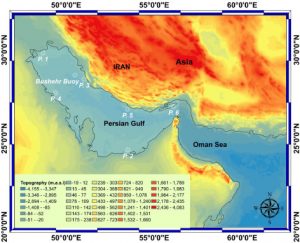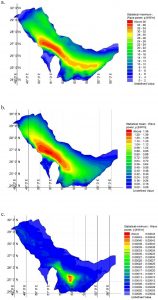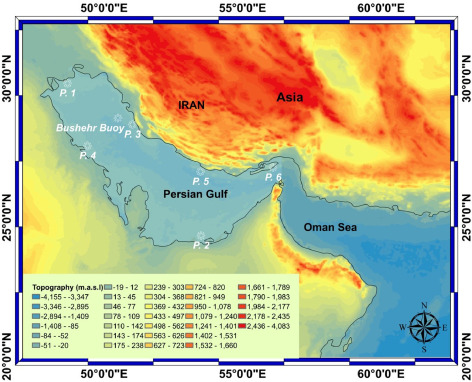By HamidGoharnejad, EhsanNikaein, WillPerrie

We are motivated to study the exploitation of marine energy as a renewable resource because of society’s ever-increasing energy demands, and a concomitant needs to reduce greenhouse gas emissions. Additionally, climate-related variations in wave energy should be investigated in order to ensure the stability of its long-term availability. Here, we investigate the potential for wave energy in the Persian Gulf along the southern coasts of Iran. To do so, we have applied the Mike SW numerical model and ECMWF wind field data for a 30-year study, from 1988 to 2017. For this purpose, wave energy was evaluated at six points in the western, northern, southern, and eastern parts of the Persian Gulf. To assess the impacts of climate change, we also consider the wave regime from 2070 to 2099 (for 30 years) following IPCC RCP4.5 and RCP8.5 climate change scenarios. Our findings suggest that in the present climate, seasonal variations in the mean wave parameters (i.e. wave energy, wave period, and significant wave height) correspond to the lowest wave energy in the summers and highest in the winters. In the future climate change scenarios, energy level variations generally have similar patterns, with slight modulations in some local areas.

Figure . (a) Maximum, (b) mean, and (c) minimum wave energy for 30 years (1988–2017).
Read more about this interesting article here: https://doi.org/10.1016/j.oceano.2020.09.004
You may also read here: http://www.inio.ac.ir/Default.aspx?tabid=1998
–
–

